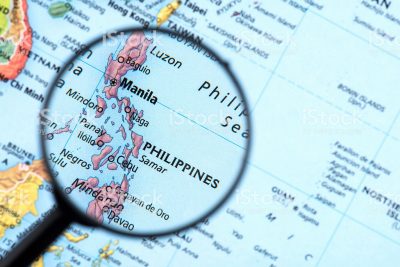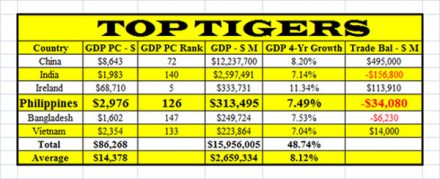By Kumar Balani
New York, NY – It has been said ‘no man is an island’ which essentially means no single person can live by himself for long without one day going crazy from lack of companionship or communication with other human beings. Filipinos interact with people in a lot of other countries, and Philippine national leaders have frequently reached out to, and personally met with leaders of other countries for mutual national benefit. People in other countries do the same because we are all interconnected, most especially in an economic sense.
Just over 107 million Filipinos in the Philippines as of today are part of a global family of 7.62 billion people who live on our planet, according to the World Population Clock (WPC). How are you as an average Filipino (or Philippine resident of a different national origin) faring with others in seven continents and 200 countries (counting the Holy See and Palestine)?
I believe the most important aspects of a comparative analysis in most people’s minds are those that relate to their finances. Financial well-being is of utmost concern in your life, right? Send me a comment if you think otherwise. So let’s take a look at Gross Domestic Product (GDP) figures, both on national and individual levels
Philippines’ GDP: US $313 Billion
According to the International Monetary Fund (IMF) the Philippines’ total GDP was about US $313 billion in 2017, ranking No. 39. This puts the country in the top fifth of all, with the United States topping this list at nearly $19.4 trillion. Tuvalu, a group of islands northeast of Australia with 11,316 inhabitants (per WPC) had the smallest GDP in the world, with just $40 million.
The GDP per capita (on a nominal or US dollar basis) is the measure that really counts, not just a country’s total GDP. Imagine it as the size of your personal slice of the Philippine economic pie. It is used by economists to compare individuals’ incomes between countries. It is essentially the value of all final goods and services produced within a nation in a given year, converted at market exchange rates to current US dollars, then divided by the average population for the same year.
Filipinos’ Nominal GDP Per Capita: US $2,976
For Filipinos, nominal GDP per capita was US$ 2,976 in 2017, according to the IMF. When you convert this amount at the exchange rate today, October 21, of $1.00 = P53.67, it comes to around 159,722 Philippine pesos per year, or Php 13,310 a month. How does this amount compare with your own monthly earnings? Do you earn less than this amount, or more?
The largest earners in the world are those who live in Luxembourg, where the average person among some 584,000 inhabitants made $105,803 in 2017, which is 78 percent more than the average US resident’s earnings of $59,501, and about 35 times the average Filipino’s earnings. The smallest earners are people of South Sudan, where the average person among 12 million people made a mere $228 in 2017, or less than eight percent of the $2,976 each Filipino earned.
While nominal GDP per capita makes comparisons in US dollars, monies earned and spent to buy goods and services are actually in local currencies. For example, while a Big Mac costs an average $3.99 in the US (about 214 Philippines pesos), it costs only Php 140 in Manila, we discovered after a quick check online. If the Big Mac in Manila in fact only costs Php 140 or just $2.61, this price is 35 percent lower than the $3.99 average US Big Mac price.
GDP Per Capita on PPP Basis: US $8,229
Because of variations in local currency values and fluctuations in exchange rates with the US dollar, economists came up with a more reliable measure of earnings and prices across countries called the GDP per capita on a Purchasing Power Party (PPP) basis. In 2017, the global average GDP per capita on PPP basis was US $17,300.
On this basis, the average Filipino made US $8,229 in 2017. The largest earners on PPP basis are in Qatar where the average person made US $124,927 in 2017. The smallest per-person earnings in 2017 were $681 by people in the Central African Republic.
The Qatar Riyal and several other Middle East countries’ currencies have higher values than the US dollar. You get only 27 US cents for each Qatari Riyal. Is it any wonder why many Filipinos work in the Middle East? But a US dollar gives you 569 Central African Francs, and a CAF is worth only $0.00175, or less than two-tenths of one cent.
Kumar (Kem) Balani has an AB Journalism degree from the University of the Philippines and an MA in Politics from New York University. He is founder and publisher of Biz India Online News since 2002. Go to www.BizIndia.net to read book reviews, news and features on business, investing, technology; opinion columns, and more.
This article first appeared in the Nov. 04, 2018 issue of the Daily Tribune in the Philippines. Click on this link to read his columns: http://tribune.net.ph/index.php/author/kumar-balani/







